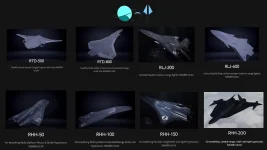- Views: 1K
- Replies: 11

Q-Alpha Aerospace, an innovative aerospace company based in Bangalore, India, has revealed its ambitious project to develop the QAL-J10. This state-of-the-art turbojet engine utilizes artificial intelligence to optimize performance and is intended to power a new generation of unmanned combat aerial vehicles (UCAVs) and advanced drones. The company also envisions the engine as a key component in future hypersonic aircraft development.
The QAL-J10 is a multi-stage engine that generates 10 kilonewtons of thrust and incorporates both an afterburner and an exhaust choking system. Q-Alpha Aerospace emphasizes the engine's meticulous design, based on advanced scientific and mathematical models, and its compatibility with Turbine-Based Combined Cycle (TBCC) architecture, a technology crucial for achieving hypersonic flight. This forward-thinking design philosophy positions the QAL-J10 as a potential power source for the next generation of high-speed UCAVs.
One of the defining features of the QAL-J10 is its integration of artificial intelligence. This allows the engine to possess a high degree of "system awareness," continuously monitoring its performance and making real-time adjustments to maximize operational efficiency. The engine's software architecture enables it to process data from multiple sensors, providing a comprehensive understanding of its operating environment and allowing it to adapt to varying conditions.
Further enhancing its capabilities, the QAL-J10 utilizes digital twin technology. This creates a virtual replica of the engine, allowing engineers to simulate its performance under a wide range of scenarios, optimize parameters, and gain valuable insights into its operation. This digital twin provides comprehensive situational awareness and facilitates enhanced operational readiness.
Q-Alpha Aerospace believes the QAL-J10 represents a significant leap forward in propulsion technology. By combining cutting-edge AI with advanced design methodologies, the company aims to deliver an engine that not only meets the demands of current UCAV and drone applications but also paves the way for the development of hypersonic platforms in the future.

